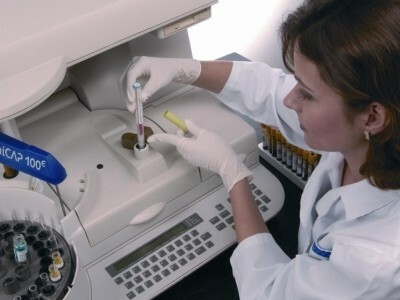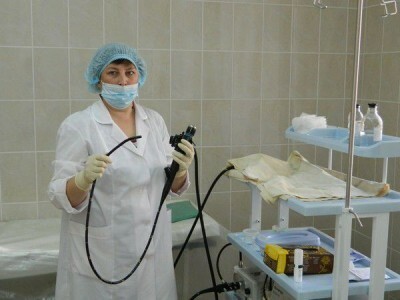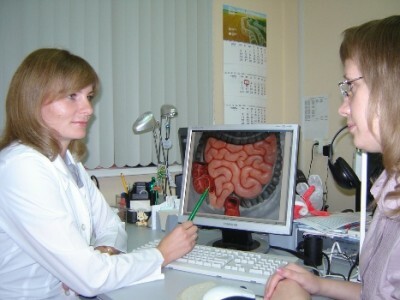1 Serum isoenzyme content
Serum alkaline phosphatase may vary widely. These figures range from 44 to 147 IU / liter. At the same time, when determining the amount of phosphatase in the blood, attention should be paid to the sex of the patient whose blood is taken for the study, in addition, attention should be paid to the age of the person being examined. In pregnant women, as a rule, the concentration of alkaline phosphatase in the blood is too high. Have a slightly overestimated figure, as well as children of adolescence, who are in the period of puberty. Increase in the concentration of the enzyme during this period is not a pointer to the presence in the body of any violations and abnormalities. The reasons for the overestimation of the norm of alkaline phosphatase in the blood during this period consist in the passage in the body of the rapid processes of its reorganization, which are associated with various life support systems and the growth of bone tissue and placenta. 
-
 IMPORTANT TO KNOW! Gastritis? Ulcer? To have a stomach ulcer not turned into cancer, drink a glass. ..Read the article & gt; & gt;
IMPORTANT TO KNOW! Gastritis? Ulcer? To have a stomach ulcer not turned into cancer, drink a glass. ..Read the article & gt; & gt;
Recommended reading
- Decoding of biochemical blood test in women
- Norm of bilirubin in blood
- Preparatory actions for ultrasound of
- Effective agent for gastritis and gastric ulcer
As a rule, the content of alkaline phosphatase may fluctuate depending on the reagents used in the process of investigation. At the present stage of the standardized laboratory medical technique, there is no definition of an enzyme. The norm in women and men, depending on the method of determination, may fluctuate, but the range of discrepancies in the rates is insignificant. Alkaline phosphatase is increased if its concentration exceeds:
- in children under 10 years of age, the indicator is 150-350;
- in adolescents from 10 to 19 years of age is between 155 and 500;
- for an adult up to 50 years of age from 85 to 120;
- at the age of 50 to 75 years the indicator is 110-135;
- for a person over 75 years of age is 165-190.
The content of this type of compound in the blood in addition to the increased amount may be decreased. If alkaline phosphatase in the blood is lowered?this may indicate a person has a number of serious violations.
To determine the amount of this type of compounds, any specialist conducts a number of clinical studies. However, the limits of normal phosphatase indices are extensive and depend on a large number of factors, therefore it is impossible to judge the presence or absence of a disease in a person with only one indicator of the amount of this compound in the body fluids. This indicator is used as an additional sign of diagnosing the ailments of the body.
-
 Gastroenterologist. IMPORTANT: "I beg you, if you began to worry about abdominal pain, heartburn, nausea, do not in any way do gases. .."Read more & gt; & gt;
Gastroenterologist. IMPORTANT: "I beg you, if you began to worry about abdominal pain, heartburn, nausea, do not in any way do gases. .."Read more & gt; & gt;
2 Increase in the concentration of the enzyme in the body
A blood test for a decrease or increase in alkaline phosphatase is carried out for certain medical indications. Such indication may be:
- preparation of the patient for surgical intervention;
- conducting a planned specific examination of the patient.

Blood sampling is carried out for the analysis when carrying out the liver test and for evaluating the functional capacity of the liver.
Very often, a patient is examined for deviations in the amount of enzyme in the blood, in the presence of patient complaints of fatigue, loss of appetite, the appearance of nausea and pain in the right hypochondrium. As an additional diagnostic feature that allows to detect the presence of a disease, the amount of enzyme in the blood serum is determined, in the presence of suspicions of the development in the body of diseases associated with the defeat of bones and bone tissue.
Increased serum phosphatase content always signals a possible defeat or involvement in the pathological process in the body of bones, liver or bile ducts. To refine the results of the survey allows an additional complex of surveys. So, for example, if along with an increase in the concentration of alkaline phosphatase an increase in the number of ALT and AST is detected, then it indicates the presence of ailments associated with impaired liver function. If the increase in the amount of enzyme occurs in conjunction with an increase in the level of calcium and phosphorus, this indicates that there are lesions in the bone tissue.
TIP FROM THE MAIN GASTROENTEROLOGIST
Korotov SV: "I can recommend only one remedy for the rapid treatment of Ulcer and Gastritis, which is now recommended by the Ministry of Health. .." Read testimonials & gt; & gt;
3 Reasons for increasing the phosphatase concentration
To date, medicine is known for many reasons that contribute to an increase in the concentration of the enzyme in the patient's body. The whole complex of causes can be divided into four main groups. 
The first group - the causes associated with the occurrence of abnormalities in the work of the kidneys or diseases affecting these organs. Such ailments can be mechanical jaundice, which causes the appearance of obstruction of the bile ducts, the formation of stones in the biliary tract. This ailment can be triggered by the formation of scars after an operative intervention. Additionally, an increase in the concentration of the enzyme may lead to the development of cancer of the pancreas head, stomach, or the formation of metastases of cancer in the hepatic tissue. With hepatitis and cirrhosis of any origin in the human body, a rise in phosphatase is revealed. Infectious mononucleosis can be a direct cause of abnormalities in the functioning of the liver and is capable of provoking an increase in the amount of enzyme in the blood serum.
WE RECOMMEND!
For prevention and treatment of Digestive Diseases our readers advise Monastic tea. This unique remedy consists of 9 medicinal herbs useful for digestion, which not only complement, but also enhance each other's actions. Monastic tea will not only eliminate all symptoms of the gastrointestinal tract and digestive system, but will also permanently eliminate the cause of its occurrence.
The opinion of doctors. .. "
The reasons for the second group are disorders related to the functioning of bone tissue of the body. These disorders can be caused by diseases such as osteomalacia, which is a process of softening of the bone tissue, resulting from a lack of calcium, osteosarcoma, metastasis of cancerous foci that affect the bone tissue of the body, the appearance of fractures, the development of rickets and myeloma.
The third group represents other reasons not specified in the first two groups. The change in the amount of enzyme in the blood toward the upside may be due to the occurrence and development of myocardial infarction, ulcerative colitis and the occurrence of intestinal perforation. In addition to this group is hyperparathyroidism, which is a hormonal disease that promotes the washing out of calcium from bone tissue.
The reasons included in the fourth group are not a consequence of the development of diseases in the body, but they are caused by a whole complex of various factors. This group includes a state of the female body, such as the period of gestation, adolescence, women under 20 and men under the age of 30 years.
4 Reasons for lowering the phosphatase concentration
Lowering the enzyme content in the blood can indicate the presence of a number of serious diseases in the body. Possible causes of a decrease in the amount of phosphatase in the blood serum may be as follows:
- blood transfusion in large volumes;
- decreased functionality of thyroid;
- severe anemia;
- deficiency in the body of trace elements such as zinc and magnesium;
- hypophosphatase, which helps soften the bone tissue.
In detecting a decrease in the volume of phosphatase in the serum of a pregnant woman, this may indicate a deficiency in the functioning of the placenta.

In order to qualitatively evaluate the result obtained during the quantitative study for alkaline phosphatase by a specialist who conducts an examination of the patient's body, it is required to conduct a number of studies that confirm or deny the expected diagnosis. Quantitative indices of the enzyme can vary over a wide range, so it is impossible to establish an exact diagnosis based on the results of a study of the amount of enzyme in the blood serum. This indicator can be used in diagnosis to obtain the completeness of information about a patient's disease.
5 Analysis of small intestine juice for alkaline phosphatase and development in the body of hypophosphatase
Determination of enzyme activity in intestinal juice is used in assessing the functional state of the gastrointestinal tract and intestinal mucosa. During the study, the enzyme activity is determined separately in the duodenum and lean. The concentration of the enzyme in the composition of duodenal juice can fluctuate in the range of 10 to 30 units / ml. People living in the southern regions have an enzyme activity higher than people living in the northern latitudes. The enzyme activity in the jejunal juice varies from 11 to 28 U / ml.
Normal activity of phosphatase is defined as activity that fluctuates between 10 and 45 units / ml. The increase in enzyme activity to values of 46 to 100 U / ml is classified by physicians as weak. Increase in activity from 101 to 337 units / ml is considered to be significant. At values exceeding the 337 unit / ml, this increase in activity is sharp. The enzyme activity depends largely on the type of nutrition, which makes this indicator less informative.
Hypo-phosphatase is a rarely progressive metabolic disease that has a hereditary origin. It develops due to the appearance of alkaline phosphatase deficiency. Deficiency occurs as a result of mutation of a gene that encodes a nonspecific tissue enzyme. The lack of activity of the nonspecific enzyme in the patient's blood serum provokes the development of hypomineralization in the body and extensive disturbances in the processes of mineral metabolism in bone tissue, in addition this anomaly provokes the development of polyorganic complications in the body.
At the moment, there is no method for treating this ailment in medical science, and a promising enzyme-containing preparation of phosphatase alfa is the only medicine that can stop the development of the disease in the human body.
- 1 Serum isoenzyme content
- 2 Increase in enzyme concentration in the body
- 3 Reasons for increasing phosphatase concentration
- 4 Reasons for decrease in phosphatase concentration
- 5 Analysis of small intestine juice for alkaline phosphatase and development in the body of hypophosphatase
Alkaline phosphatase is a hydrolysis enzyme that cleaves phosphate from various types of molecules. Such molecules can be nucleotides, proteins, alkaloids. This enzyme is most active in an alkaline environment.
The enzyme provides transportation of phosphorus through the thickness of cell membranes of cellular structures. The amount and activity of the enzyme is an indicator of the activity of phosphoric and calcium metabolism. Phosphatase alkaline contains bone tissue, gastrointestinal mucosa, liver hepatocytes, renal tubule cells, in addition this enzyme is synthesized in cells that make up the placenta tissues during the period of gestation. The main amount of phosphatase in the human body is contained in the small intestine. So, for example, the concentration of the compound in the small intestinal mucosa is 30-40 times higher than in the cells of the liver tissue. The compound is synthesized by the surface layer of the small intestinal mucosa, but the role of phosphatase in the digestive process is secondary. The main function of this compound is to ensure the processes of total metabolism.
Do you have gastritis?
GALINA SAVINA: "How easy is it to cure gastritis at home for 1 month. A proven method - write down a recipe. ..!"Read more & gt; & gt;
For the diagnosis of various ailments, an examination is carried out for the presence and amount of enzyme in body fluids, which are:
- blood serum;
- urine;
- gastric juice.
In addition, the determination of isozymes of phosphatase:
- by hepatic;
- bone;
- intestinal;
- placental and some others.
Chemically, the enzyme is isoenzymes, phosphohydrolase monoesters of orthophosphoric acid. These monoesters have molecular weights from 70 to 120 kDa.


